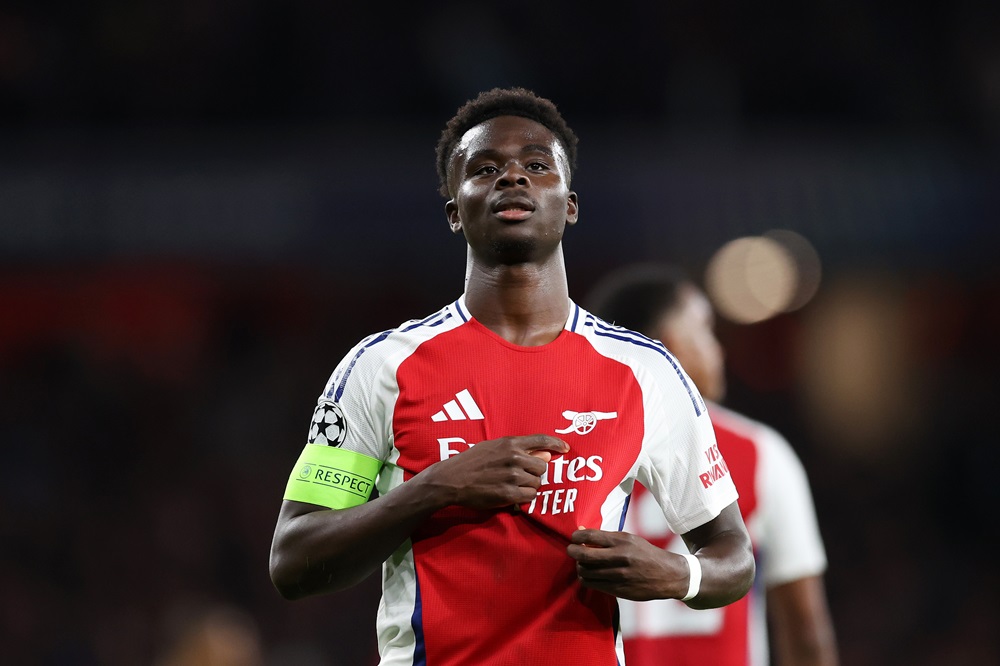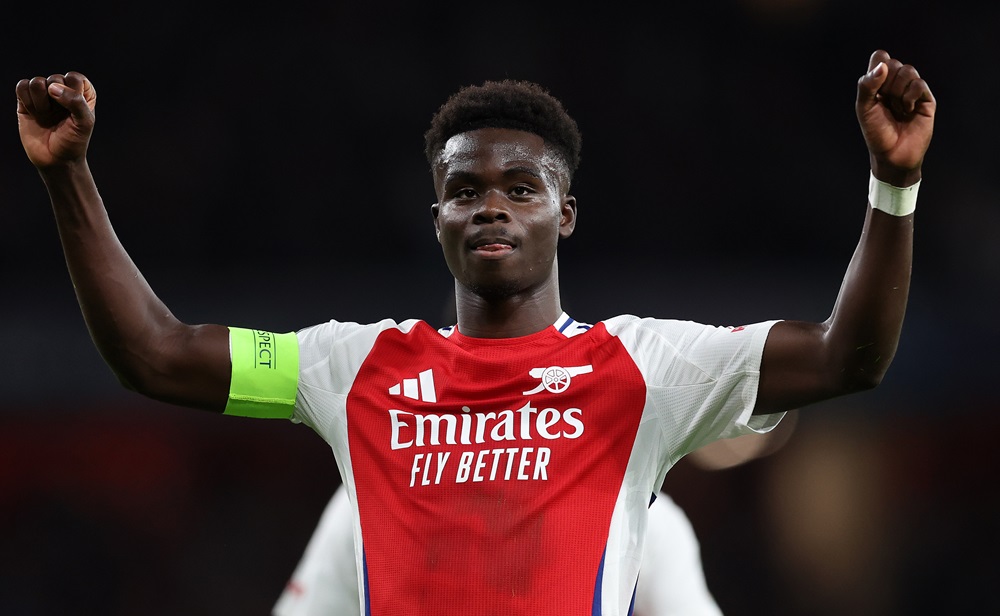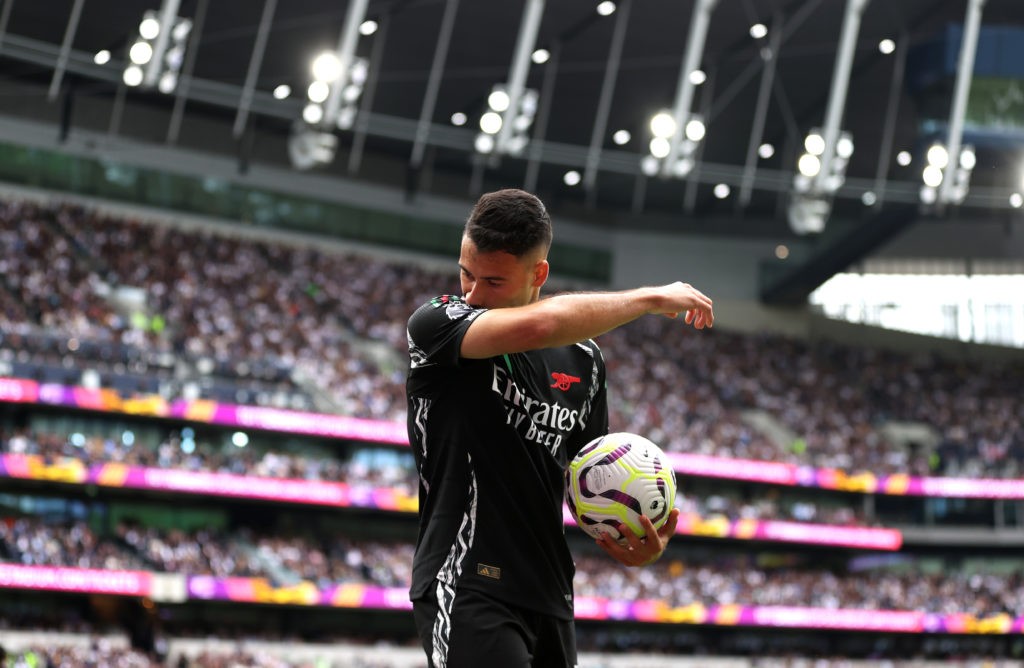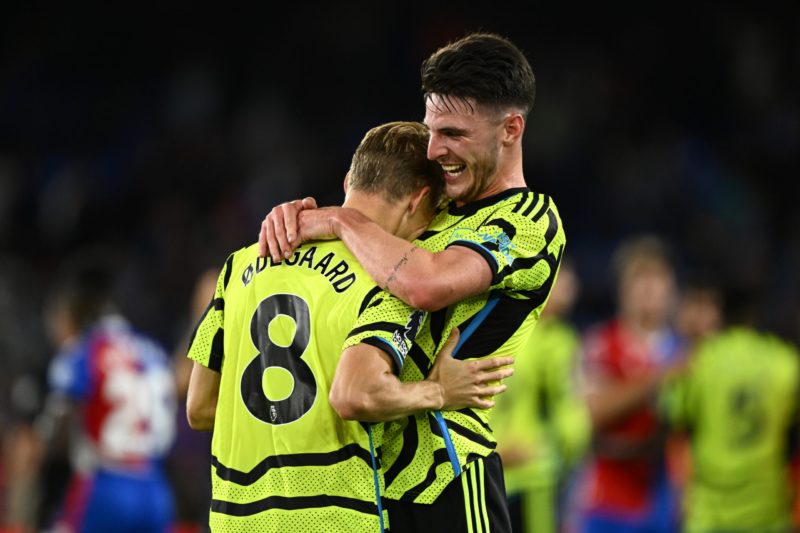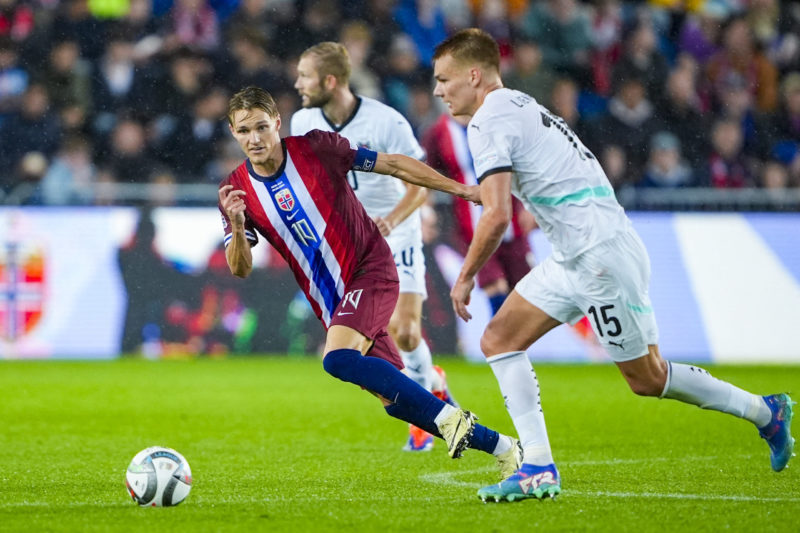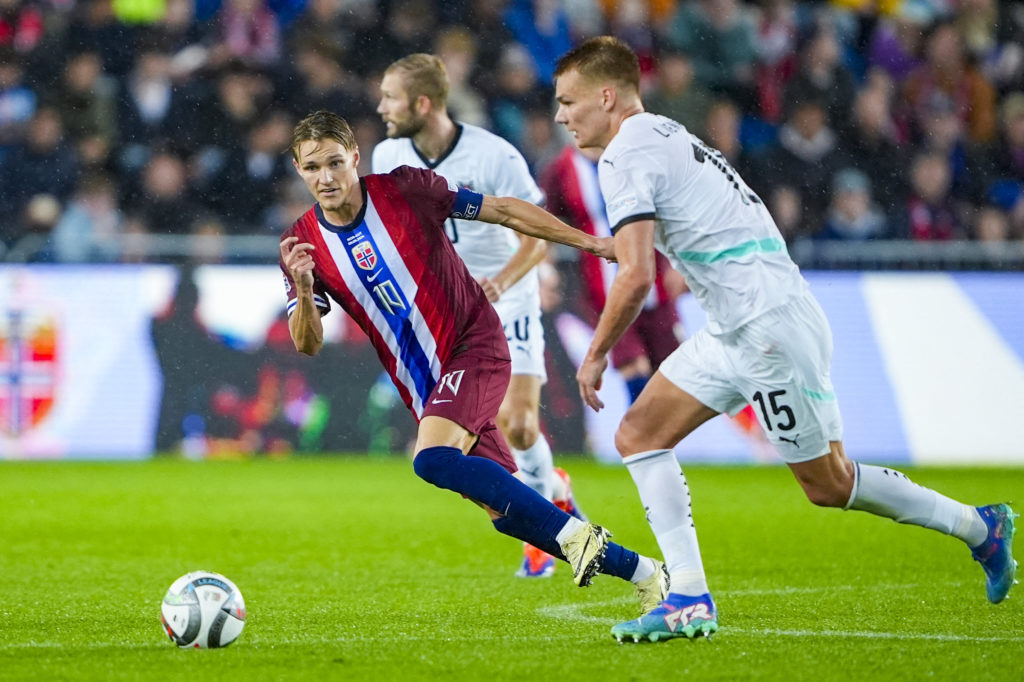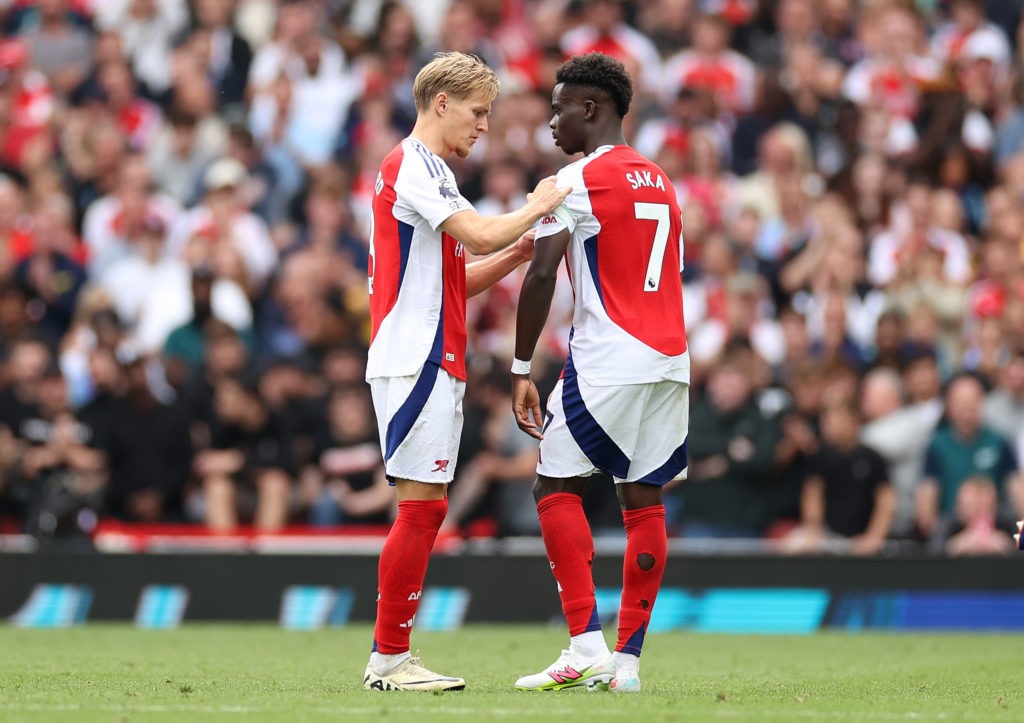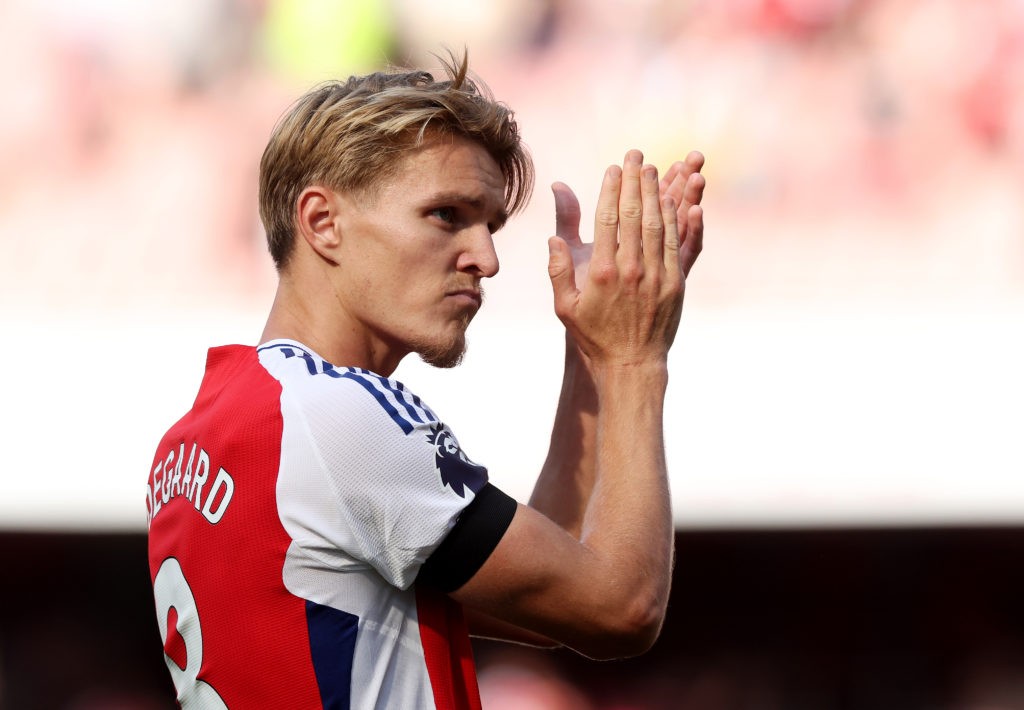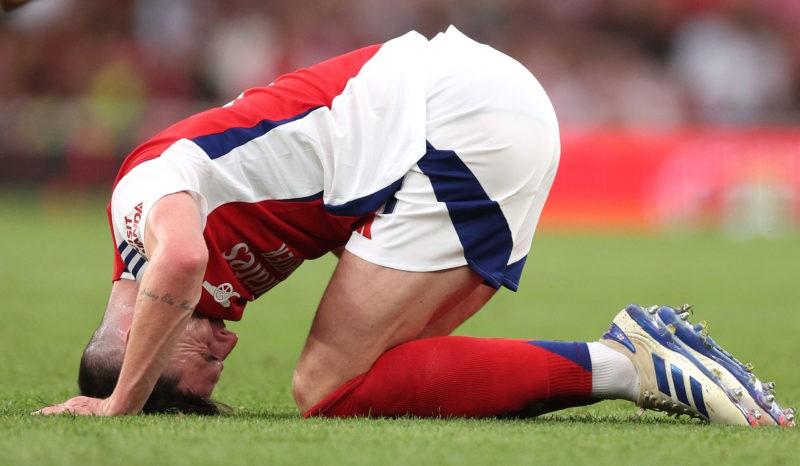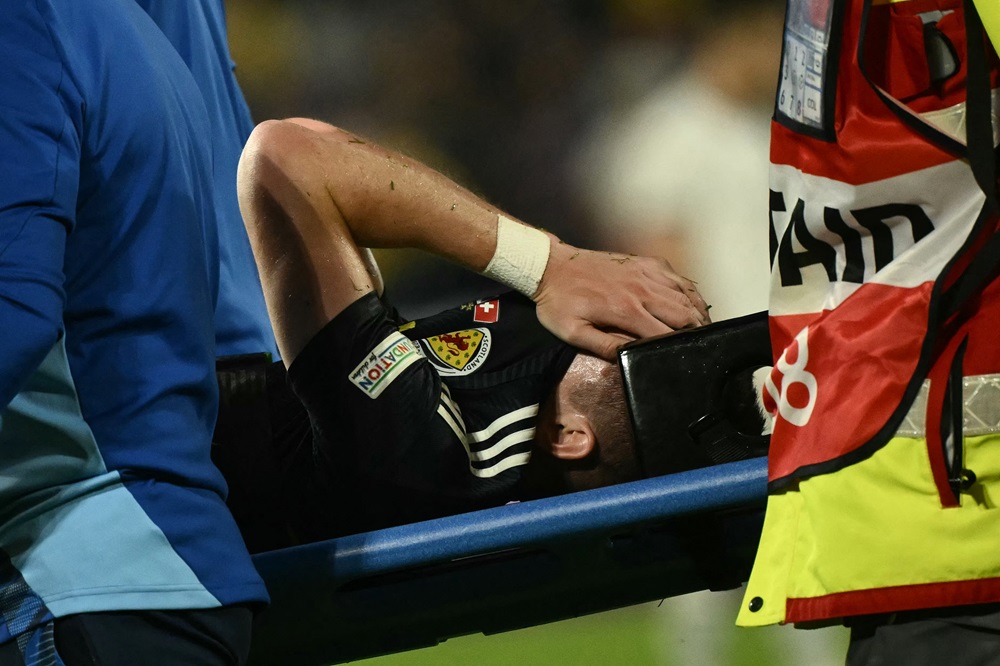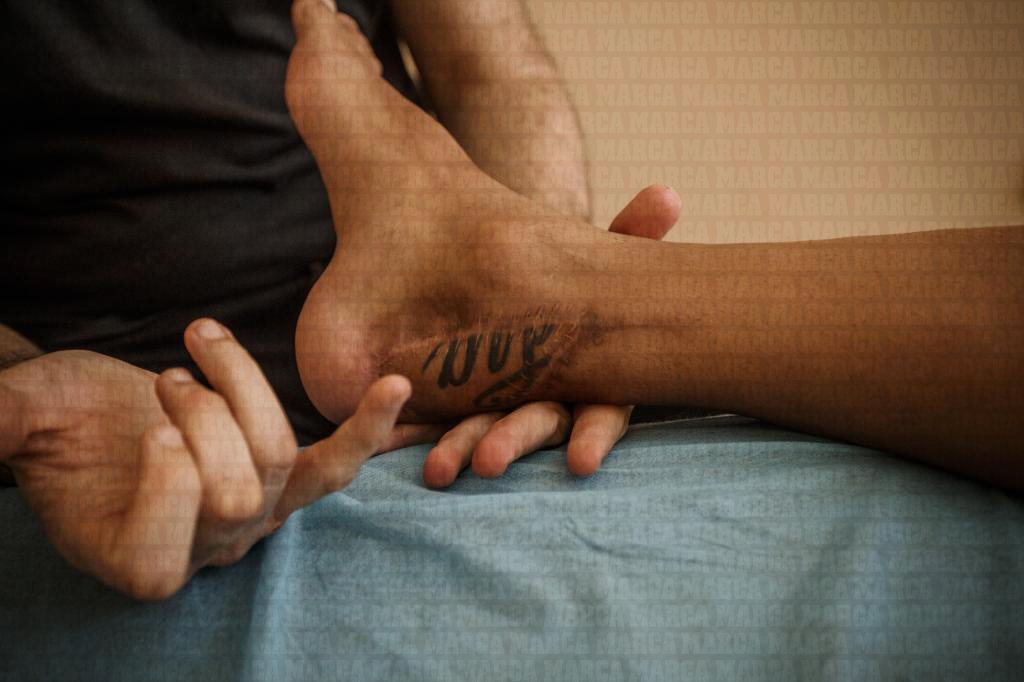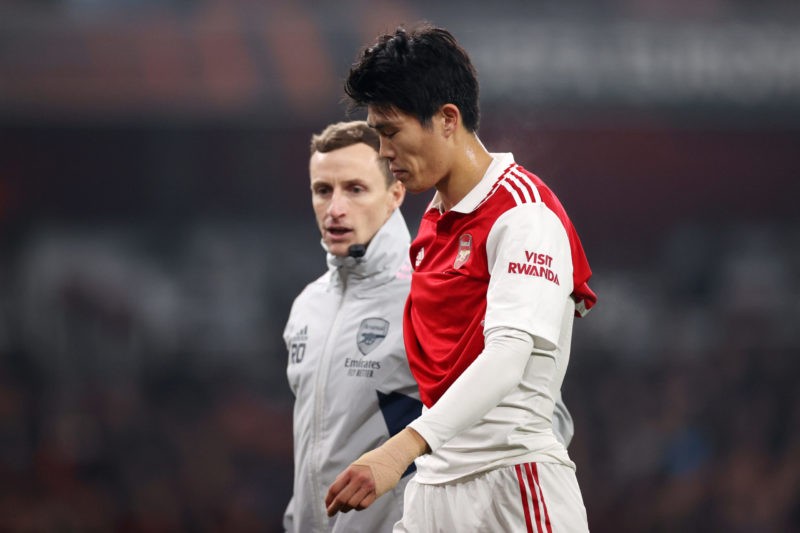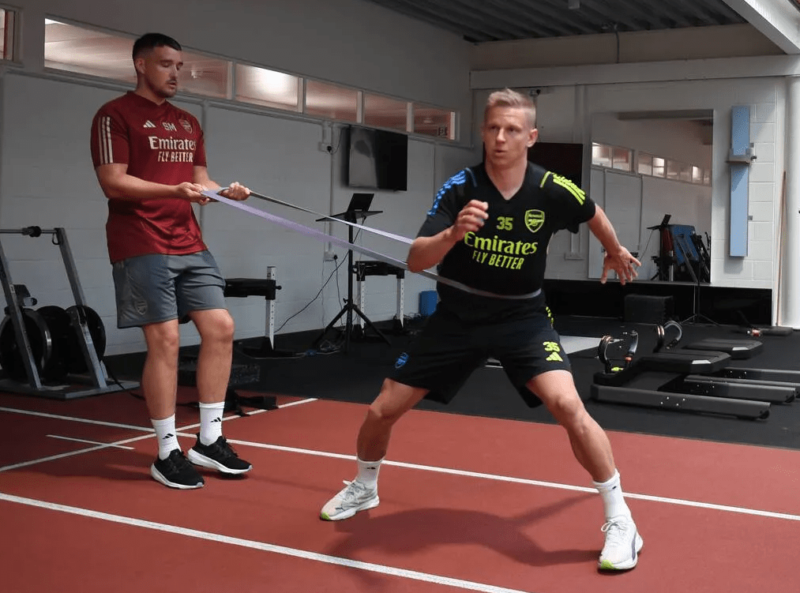Current Arsenal injury list
Arsenal injuries overview
- Takehiro Tomiyasu (Unknown)
- Bukayo Saka (Hamstring injury, assessments ongoing, unlikely to face Shakhtar after missing training on Monday)
- Jurrien Timber (Muscular injury, unlikely to face Shakhtar after missing training on Monday)
- Martin Odegaard (Ankle sprain, expected return November (8 weeks))
- Kieran Tierney (Hamstring injury, in training, expected return October 2024)
Arsenal injuries more information
Takehiro Tomiyasu
- Injury: Unknown
- Status: Undergoing assessments
- Out since: Injured during October international break
- Expected to return: Unknown
Over the last few days, there had been rumours that Takehiro Tomiyasu had suffered yet another setback and on Friday, Arteta confirmed that he has.
“Yeah we don’t know how long he’ll be out for,” Arteta said. “It doesn’t look like hopefully a long period. But we’ll have to see when he comes back how he reacts to the load and the impact on the pitch. We really need him. The work that he put in to be back was amazing. Now he’s got another thing.”
Bukayo Saka
- Injury: Hamstring
- Status: Withdrawn early from England’s game against Greece
- Out since: England vs Greece, October 10
- Expected to return: Possibly vs Shakhtar
Bukayo Saka appeared to suffer a hamstring injury during England’s game against Greece, before being withdrawn from international duty.
Lee Carsley initially said: “He’s being assessed. Obviously in the build up to the first goal, you could see he felt something in his leg.”
Carsley then added on Saturday, October 12th: “Bukayo would have been close (to play against Finland on Sunday) but it would have been unfair to take a risk with him. He’s a positive person and I expect him to be fine.”
Reports suggested Saka was hoping to play for Arsenal against Bournemouth on Saturday. Ahead of that game, Mikel Arteta said, “It’s not a serious injury. He’s evolving well. He was probably good enough to play with the national team second game. We have some big tests today so we are hopeful.”
However, Saka was not included for the squad with Arteta saying, “We tried the last few days but he didn’t have the right feeling. There was no point pushing him and we have very good options as well.”
Ahead of the game against Shakhtar, Arteta told reporters, “Let’s see how Bukayo is after the training session later on.” He then missed training.
Jurrien Timber
- Injury: Muscular
- Status: Came off early against PSG after feeling something
- Out since: PSG on 1 October
- Expected to return: Possibly v Shakhtar
Timber came off at half-time during Arsenal’s home match against Paris Saint-Germain, with Mikel Arteta explaining that the defender “felt something muscular”, adding that the player “was uncertain and I didn’t want to take any risks”.
Ahead of the game against Shakhtar, Arteta said, “He’s going to be close. We have to see how he deals with training with the whole group. It was a muscular injury.”
Timber was not involved in training on Monday.
Martin Odegaard
- Injury: Ankle ligament damage
- Status: Out
- Out since: Picked up injury playing for Norway v Austria 9 September 2024
- Expected to return: November
Norway manager Stale Solbakken has provided a more cautious update on Martin Odegaard‘s recovery, despite the optimistic tone from the Arsenal captain himself. While Odegaard recently shared that he is making “good progress” with his recovery and hopes to return soon, Solbakken tempered expectations, stating, “There is great progress in relation to pain and injury, but he is a long way from playing matches.” He added that Odegaard’s situation remains in Arsenal’s control, with no clear timeline for his return.
Ahead of Bournemouth, Arteta said, “He’s not gonna be fit for this game. Next week will be a different story. He needs to clear some markers doing things with the ball in that latter stage of rehab. Next week will be crucial.”
Ahead of the game against Shakhtar, Arteta said Odegaard is not fit, but is getting ‘closer’.
Kieran Tierney
- Injury: Hamstring
- Status: In individual training
- Out since: June 19 2024
- Expected to return: October 2024
Kieran Tierney has resumed individual training following a hamstring injury sustained during Euro 2024. Tierney shared images on Instagram confirming his progress, as he runs on the pitch at London Colney. Though not yet involved in full team sessions, the Scotland international is edging closer to a return.













